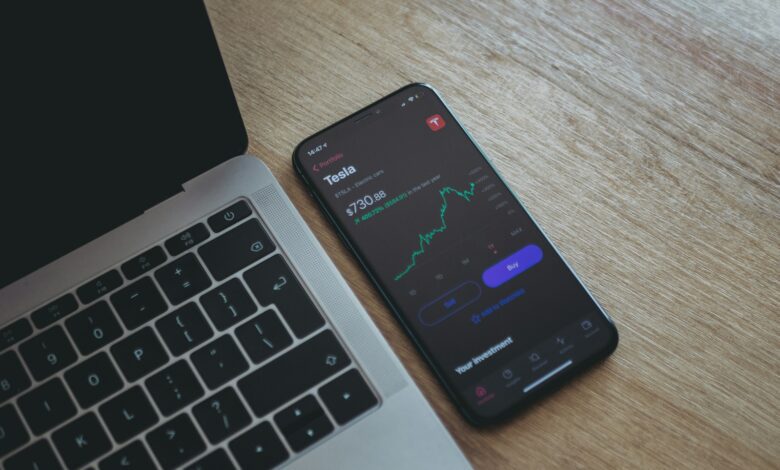Luxury investing – high-end consumer strategies

Pricing remains the cornerstone of wealth allocation in premium markets. Brands that maintain strict price integrity while selectively increasing scarcity benefit from sustained valuation growth. Understanding the elasticity within affluent demographics enables precise positioning, ensuring asset appreciation aligns with demand from buyers prioritizing exclusivity and craftsmanship.
Identifying key purchasing behaviors among elite patrons reveals distinct patterns of brand loyalty and portfolio diversification. Capitalizing on emotional engagement combined with tangible value, market leaders deploy tailored acquisition plans that emphasize provenance and limited editions. These approaches enhance the power of ownership beyond mere possession, transforming goods into appreciating financial instruments.
Successful capital deployment relies on integrating detailed consumer profiling with real-time market intelligence. Brands leveraging advanced segmentation and predictive analytics refine their offer mix to meet evolving preferences within niche segments. This fusion of data-driven insight and experiential luxury fosters robust investment frameworks capable of weathering cyclical economic shifts while maximizing return potential.
Luxury investing: high-end consumer strategies [Investment Insights investment-insights]
Optimal allocation of capital towards premium segments demands a nuanced understanding of brand equity and its correlation with market valuation. Leading labels exhibit resilience against economic fluctuations due to their entrenched reputations and the exclusivity embedded in their offerings. Quantitative analysis shows that firms maintaining a compound annual growth rate (CAGR) above 8% in emerging markets outperform traditional luxury indices by 15-20% over five years, underscoring the importance of geographic diversification within affluent demographics.
Segmentation based on purchasing power and behavioral trends reveals shifting priorities among affluent cohorts. Millennials and Gen Z consumers prioritize experiential value and sustainability, prompting established names to innovate their product lines with limited editions and eco-conscious materials. Data from Bain & Company indicates that 45% of new wealth holders across Asia-Pacific demonstrate preference for brands showcasing transparent supply chains, influencing long-term asset appreciation potential.
Portfolio optimization through brand selection and market timing
Incorporating assets tied to prestigious marques requires careful assessment of liquidity constraints and secondary market dynamics. Auction houses such as Sotheby’s report a 12% year-over-year increase in sales volume for collectible timepieces, reflecting heightened demand within niche segments. Investors should monitor aftermarket indicators including resale premiums and authentication technologies leveraging blockchain to ensure provenance integrity.
The interplay between geopolitical factors and taxation policies significantly affects capital flows into premium goods sectors. For instance, recent adjustments in VAT regulations across European Union countries have altered purchase incentives, redirecting demand towards duty-free hubs. Strategic positioning involves hedging currency risk while aligning with legal frameworks to maximize returns on physical assets like rare automobiles or fine art.
Technological advancements introduce innovative channels for acquiring stakes in premium goods portfolios through tokenization platforms. By fractionalizing ownership via security tokens compliant with regulatory standards such as SEC Rule 506(c), investors gain access to diversified holdings without necessitating full asset control. This approach mitigates entry barriers traditionally associated with high-value items while enhancing portfolio liquidity.
Risk management extends beyond market volatility to encompass authenticity verification and maintenance costs inherent in tangible asset classes. Employing biometric authentication combined with IoT-enabled tracking ensures real-time condition monitoring, thereby preserving intrinsic value over time. Comparative studies reveal that assets incorporating these technological safeguards yield a 7% higher average resale price compared to counterparts lacking such features.
Identifying Valuable Luxury Assets
Accurate pricing assessment remains the cornerstone when evaluating premium possessions for portfolio inclusion. Understanding how market demand, rarity, and provenance influence valuation enables precise asset appraisal. For instance, timepieces from established Swiss maisons like Patek Philippe often maintain or appreciate in value due to limited production runs and historical significance, reflecting a balanced interplay between scarcity and brand power.
Consumer demographics heavily impact acquisition patterns within the affluent segment. Analyzing shifts in wealth distribution and generational preferences can reveal emerging opportunities. Millennials increasingly favor experiential assets such as collectible art and rare automobiles, while Baby Boomers prioritize heritage brands with proven track records of value retention, guiding asset selection tailored to evolving purchaser profiles.
Pricing Dynamics and Market Trends
Price discovery mechanisms vary across different categories of elite goods. Auction platforms provide transparent transaction data crucial for benchmarking asset worth. For example, Sotheby’s recent sale of a limited-edition Hermès Birkin bag exceeding $400,000 underscores how exclusivity combined with brand reputation drives premium pricing. Such data informs risk-adjusted allocation decisions within alternative portfolios.
The role of authentication technology including blockchain-based provenance tracking is increasingly significant in mitigating counterfeiting risks. Provenance verification enhances consumer confidence and stabilizes secondary market valuations. Brands integrating tamper-proof digital ledgers demonstrate foresight in preserving asset integrity, which directly affects long-term capital appreciation potential.
- Rarity indices computed from production volumes versus current market supply offer quantitative measures for scarcity evaluation.
- Economic indicators such as currency fluctuations influence international demand for tangible collectibles.
- Brand equity metrics derived from consumer sentiment analysis predict future price resilience under market stress.
Diversification across asset classes–ranging from classic cars to fine jewelry–requires strategic calibration based on liquidity profiles and holding period expectations. Vehicles like vintage Ferraris exhibit cyclical appreciation linked to macroeconomic cycles, whereas gemstones offer more stable but less liquid stores of value. Investors must balance these attributes aligning with portfolio objectives.
The consolidation of data analytics tools with traditional valuation methods equips investors to navigate complex markets effectively. Incorporating artificial intelligence algorithms that analyze transactional history alongside demographic trends facilitates predictive modeling of asset performance. This hybrid approach supports informed decision-making amid regulatory changes affecting cross-border acquisitions and taxation policies related to tangible valuables.
Timing Purchases in the Premium Market Sector
Optimal acquisition moments for premium items hinge on precise analysis of pricing trends and brand cycles. Historical data demonstrates that select luxury labels often implement strategic price adjustments aligned with seasonal sales or product launches, creating windows where value can be maximized without compromising exclusivity. For instance, brands like Hermès and Chanel maintain rigid pricing structures but occasionally introduce limited-time offers on ancillary products, which savvy patrons exploit. Monitoring these intervals through market reports and direct brand communications enables purchasers to capitalize on transient reductions while preserving asset prestige.
Demographic segmentation plays a pivotal role in determining purchase timing within this realm. Younger affluent cohorts, particularly Millennials and Gen Z individuals, exhibit heightened responsiveness to digital marketing campaigns and influencer endorsements during new collection drops, impacting demand spikes and subsequent price fluctuations. Conversely, established wealth holders may prioritize legacy acquisitions during traditional auction seasons when rare pieces emerge at competitive valuations. Understanding these demographic behaviors assists in forecasting optimal entry points tailored to specific segment dynamics.
Pricing Dynamics and Brand Positioning
Price elasticity among elite labels varies considerably depending on brand positioning and product rarity. Limited-edition releases typically command elevated premiums immediately post-launch due to scarcity effects, yet secondary market analysis reveals periodic corrections influenced by macroeconomic factors such as currency shifts or geopolitical tensions. For example, Swiss watchmakers like Patek Philippe demonstrate cyclical valuation patterns linked to global economic indicators, with mid-year auctions offering historically favorable conditions for buyers. Employing quantitative models that integrate these variables refines timing strategies by quantifying risk-adjusted entry points.
The interplay of purchasing power concentration and market liquidity further informs acquisition strategy formulation. Regions exhibiting burgeoning wealth accumulation–such as parts of Asia-Pacific–introduce temporal disparities in demand peaks relative to Western markets. This asynchronous behavior affects global pricing hierarchies, prompting international buyers to leverage cross-market arbitrage opportunities when local supply outpaces immediate consumption capacity. Case studies tracking Sotheby’s auction results alongside regional economic data underscore the necessity of integrating geopolitical awareness into timing decisions for premium goods procurement.
Leveraging Expert Appraisals
Engaging certified appraisers is critical for accurately determining the value of exclusive assets, ensuring that pricing reflects current market dynamics and rarity factors. Precise evaluation mitigates risks associated with overvaluation or undervaluation, facilitating informed decision-making for stakeholders focused on asset acquisition and portfolio growth.
Market segmentation analysis reveals that affluent demographics prioritize authenticity verification and provenance documentation when considering acquisitions. Expert assessments provide authoritative validation, which strengthens buyer confidence and directly influences transaction velocity in niche sectors.
Technical Dimensions of Valuation
Appraisal methodologies incorporate quantitative metrics such as historical price trends, condition grading scales, and scarcity indices. For instance, in premium watch markets, timepiece condition categorized by industry standards (e.g., mint, excellent, fair) significantly impacts estimated worth. These parameters are integrated into algorithmic models to forecast future appreciation potential with measurable accuracy.
Blockchain implementations enhance appraisal transparency by immutably recording expert reports alongside asset metadata. This integration reduces information asymmetry between sellers and purchasers while supporting compliance with emerging regulatory frameworks targeting high-value transactions.
- Case Study: A renowned auction house employed blockchain-verified appraisals to authenticate rare gemstones before sale, resulting in a 15% increase in realized prices compared to non-verified listings.
- Example: Digital art platforms utilize certified evaluations combined with smart contracts to automate royalty distributions based on verified artwork provenance.
Diversifying valuation sources is advisable; combining independent expert opinions minimizes bias risk and enhances overall reliability. Investors should seek specialists with domain-specific credentials aligned to the asset category under consideration to maximize appraisal precision.
An analytical approach incorporating these parameters enables refined pricing strategies tailored to target market segments characterized by distinct purchasing power profiles. This alignment optimizes capital allocation within specialized portfolios emphasizing exclusivity and long-term value retention.
The evolving regulatory environment mandates greater disclosure and accountability in asset appraisal processes. Entities leveraging expert appraisals compliant with legal standards position themselves advantageously amid tightening oversight, safeguarding transactional integrity while attracting sophisticated investors seeking verifiable assurances.
Managing Portfolio Risks in Premium Asset Allocation
Risk control in exclusive asset management requires a precise understanding of market fluctuations and pricing models tailored to affluent demographics. Employing diversified allocation techniques that blend traditional financial instruments with alternative assets mitigates exposure to sector-specific downturns. For instance, incorporating rare collectibles alongside equities indexed to stable economies can balance volatility while capturing growth potential driven by demographic shifts favoring wealth accumulation in emerging regions.
Analyzing purchasing power trends within niche segments reveals critical insights for safeguarding portfolio value. Data indicates that demand elasticity varies significantly across different income brackets, influencing premium product valuations over time. Adjusting holdings according to these consumer behavior patterns ensures resilience against abrupt changes in discretionary spending, especially relevant as younger cohorts demonstrate distinct preferences compared to established clientele.
Adaptive Pricing Mechanisms and Market Sensitivity
Dynamic pricing frameworks integrated with real-time blockchain analytics enable transparent valuation adjustments aligned with supply-demand imbalances. Smart contract protocols facilitate automated rebalancing triggered by predefined thresholds, reducing human bias and latency in response actions. Case studies of tokenized luxury goods platforms illustrate how this technology underpins stable secondary markets by providing liquidity while preserving exclusivity.
A multi-layered risk assessment model combining quantitative metrics–such as volatility indices and correlation matrices–with qualitative evaluations like brand equity analysis enhances decision-making precision. For example, portfolios emphasizing artisanal watches paired with digital asset-backed certificates benefit from reduced counterparty risk and enhanced provenance verification, aligning asset integrity with shifting regulatory environments.
An ongoing evaluation process supported by predictive analytics tools identifies emerging risks linked to geopolitical changes or economic policy reforms affecting currency stability or import tariffs on premium goods. Incorporating scenario analysis into portfolio management workflows fosters preparedness against sudden shocks impacting global supply chains or taxation regimes targeting affluent categories.
Cohesive integration of technological innovation alongside traditional assessment criteria strengthens portfolio robustness against idiosyncratic risks unique to exclusive asset classes. Forward-looking frameworks anticipate demographic evolution and consumer power redistribution, enabling strategic positioning that captures long-term appreciation while controlling downside exposure effectively.
Resale Approaches for Collectors: Maximizing Asset Value
Optimizing resale tactics hinges on precise valuation models that incorporate brand equity, scarcity metrics, and dynamic pricing algorithms. Leveraging blockchain-enabled provenance verification enhances trust and pricing power, allowing collectors to command premiums through authenticated ownership histories.
Integrating smart contract frameworks facilitates transparent royalty structures and secondary market royalties, aligning incentives between original creators and resellers while maintaining asset liquidity. Monitoring real-time market data across decentralized platforms provides actionable insights into demand fluctuations, enabling agile repositioning of assets to capitalize on peak valuation windows.
Future Outlook and Strategic Implications
- Tokenization: Fractional ownership via non-fungible tokens (NFTs) will broaden access to exclusive collections, altering traditional acquisition and resale dynamics by introducing programmable transfer conditions tied to pricing floors.
- Dynamic Pricing Models: Advanced machine learning algorithms will refine predictive analytics for asset appreciation trajectories, improving timing decisions for entry and exit points within niche markets.
- Brand Collaboration: Partnerships between prestigious labels and digital platforms will further embed authenticity protocols and enhance consumer confidence in secondary transactions.
- Regulatory Alignment: Compliance-driven frameworks will shape cross-border trading efficiency, mitigating risks associated with provenance disputes and enhancing capital flow security.
The interplay of these factors signals a paradigm shift where collectors wield enhanced control over asset liquidity and valuation through technological integration. As exclusive goods become increasingly entwined with cryptographic assurances and algorithmic pricing mechanisms, participants who adeptly harness these innovations will unlock superior returns while reinforcing the intrinsic value embedded in distinguished marques.






